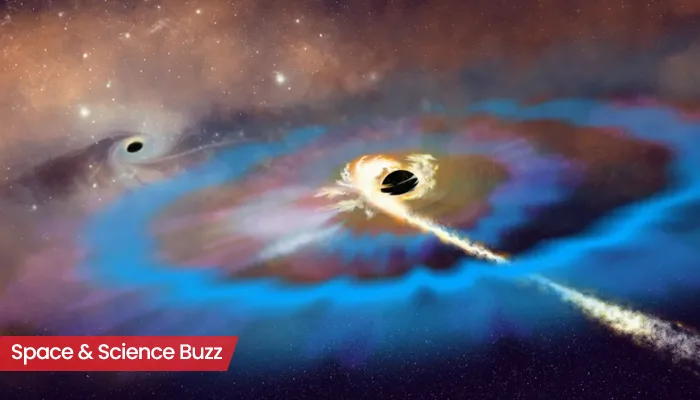More Climate Disasters? Know the Actual Science & Impact as Sun Is Shockingly Starting Next Cycle Halfway Through The Current One
- Admin
- 1 year ago
- 3 minutes read

Every object in the solar system follow a specific cycle, the same applies to the heart of the system, sun!
The solar cycle is an almost periodic change in the activities of the Sun, which lasts for at least 11 years. During this cycle, we observe least to most number of sunspots. Thus, solar cycle is also known as ‘Sunspot cycle’. Generally, sun’s surface, when gets activated, shows lots of sunspots, and when least numbers during quite phase. Sun, currently its halfway through the solar cycle, surprisingly, has shown enough hints of starting the next one! Amidst this unprecedented event, we will discuss about this solar cycle and its actual impact on us.
Unprecedented Activities of Sun:
The ongoing solar cycle, regarded as ‘Cycle 25’, started in 2019, which is supposed to end in 2030 before the next cycle. Basically, the sun is currently in its midway of cycle. Generally, during middle of the cycle, the magnetic field flips as well as poles swap. However, scientists from the University of Birmingham observed peculiar change in sun’s activities, indicating early beginning of the next cycle.
Helioseismology specialist Dr. Rachel and her team is behind this findings, in the form of “bands of faster and slower rotation.”
A scientist from the research team mentioned: “The first rumblings of its next 11-year solar cycle have been detected in sound waves within it.”

What Happens during Middle Peak of Solar Cycle?
As we are currently undergoing the peak activity of the solar cycle, also regarded as “solar maximum”, the space weather changes rapidly. It poses risks for communications, satellites activities as well as spacewalking due to enhanced radiation. Due to rise in Coronal Mass Ejections (CME), electromagnetic energy flow towards the earth increases, leading to more aurora sightings.
According to NASA Climate: “Earth's magnetic poles also flip, but the interval between the reversals is much longer, averaging about every 300,000 years. The last pole reversal happened about 780,000 years ago.”
What Happens during Transition of Solar Cycle?
During the transition from one cycle to another, the poles get swapped. So, north become south and vice versa. This leads to change in intensity of activities.
NASA’s solar physicist Phil Scherrer described: “The sun's polar magnetic fields weaken, go to zero and then emerge again with the opposite polarity. This is a regular part of the solar cycle.”
NEWS🚨: The sun has unleashed THE MOST POWERFUL SOLAR FLARE of the current solar cycle at X8.79! pic.twitter.com/hHkwoPBKXD
— Curiosity (@MAstronomers) May 15, 2024
Credit - @MAstronomers X handle
Impact of Excess Solar Activity:
According to NASA website: “Heightened solar activity poses a risk to satellites, spacecraft and even spacewalking astronauts due to increased radiation exposure. On Earth, the large geomagnetic storms that solar activity triggers can interfere with high-frequency radio communications and Global Positioning Systems (GPS).”
It might not impact the weather permanently, but, the impact is mostly temporary causing disruption in communication mostly. With more solar-centric research such as ISRO’s Aditya L-1 mission, we will get more understandings about solar environment.
As the sun is starting its new cycle, even during ongoing one, scientists are yet to determine the probable impacts.
Jake Bleacher, chief scientist for NASA's Human Exploration and Operations Mission Directorate at NASA said: “There is no bad weather, just bad preparation. Space weather is what it is, our job is to prepare.”


.webp)
.WEBP)
.WEBP)
.webp)
.webp)


.webp)
.webp)
.webp)
